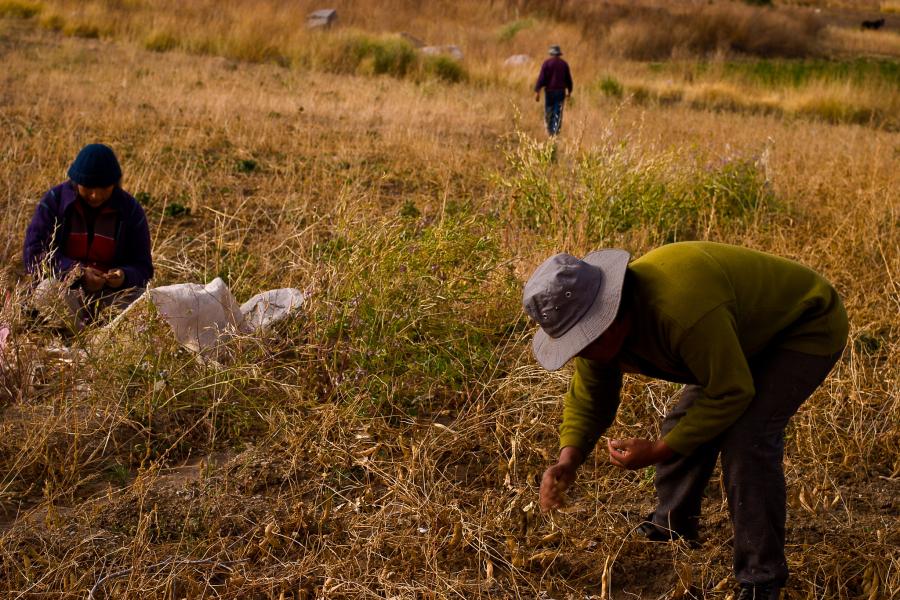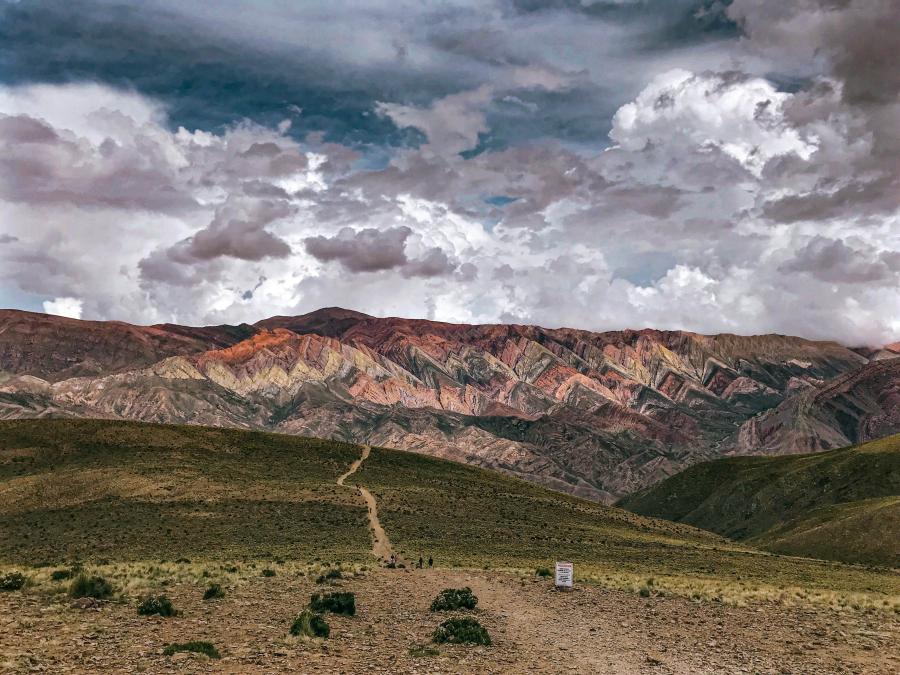Life is hard in the archipelago of western Tierra del Fuego, at the southernmost point of the South American continent. It's a wind-swept country with blizzards 80 days a year, up to five meters of rain- or snowfall and only 20 days of sunshine per year. Sometimes the Indians are able to drink the fresh water from heavy rains which forms a layer above the salt ocean water. There is no arable land, few fish in the ocean, no minerals and no other raw materials. Place names reflect the living conditions Isla Desolación (Desolation Isle), Bahia Ultima Esperanza (Bay of the Last Hope). Death, rather than life, seems to rule the endless fjords, canals, glaciers and mountain slopes.
The early explorers who visited the area were surprised that humans could survive in this harsh environment. By their accounts, local Indians reflected the natural conditions in which they lived. From an ethnocentric point of view they described the Indians as the most "savage" uncivilized of the entire world. It is said that Darwin classified them as somewhere between apes and human beings.
The Qawasqar Indians had but a few bone and stone tools. They had no musical instruments and no clothes except short fur capes over their shoulders. Yet, modern ethnologists take a somewhat different position: they find it amazing how a stone age people, by adapting to the environment, could work out an efficient way to survive in this area, independently from the outside world.
The Qawasqar
Tierra del Fuego has never been heavily populated. The Indian peoples are divided into two culture groups. The Aonikenk on mainland Patagonia and the Selk'nam and Haush on Tierra del Fuego were land-based Indians. They lived off the guanaco, a wild animal related to the llama. These peoples were all victims of extermination campaigns. At the turn of the century, sheep farmers paid one pound sterling each Selk'nam ear. Today only 60 to 100 Aonikenk survive on a small reserve at Camushu Aike in Argentina. On Isla Grande of Tierra del Fuego, 35 Selk'nam are scattered, without forming an identifiable community.
The Chono (who disappeared in the eighteenth century), the Yàmana and the Qawasqar are sea-based Indians. They are nomadic peoples who roamed the seas in search of shellfish and stranded whales. They were decimated by new diseases, in particular tuberculosis and syphilis, which caused handicaps and sterility. Some 60 Yàmana survive in the hamlet of Ukika near Puerto Williams on the Isle of Navarino, Chile. They live in the southernmost village on earth. The last 40 Qawasqar live at Puerto Edèn, on the isle of Wellington, Chile. The demise of their population is typical of that for people of the region.
Qawasqar Population
1850 4,000
1884 949
1885 490
1925 150
1946 100
1953 60
1971 47
1985 40
Genocide by Neglect
People knew about the situation of the Indians of Tierra del Fuego. Explorers like Martin Gusinde (in the 1920s), José Empérarie (1946-1948) and Christos Clairis (the early 1970s) gave accurate descriptions of what was going on. But no one listened. That is not surprising in the world of "manifest destiny." The Chilean government has even made some well-intended, if half-hearted, efforts on behalf of the Qawasqar. In the 1920s a law was passed to protect them. In the 1960s Qawasqar nomads were settled at Puerto Edèn. Ten houses were built and food and used army clothes distributed. But these efforts did not curb the dramatic population decline. The problem was that the Chilean approach did not take into account the desires of the Qawasqar themselves.
A Project for Help
The Vlaamse Wiza (Flemish workgroup for the Indians of South America) is a small non-governmental organization, centering its activities on "forgotten" Indian peoples. In 1984, after Wiza first became aware of Prof. Christos Clairis' report published in "Objets et Mondes" in 1972, we realized something had to be done for the Qawasqar. After a quick search we discovered that no new information on the Qawasqar was available! Therefore, we first needed to learn about their current situation. In 1985, Prof. Clairis was sent to Puerto Edèn. He returned with the bad news that the Qawasqar were making their last stand. An emergency help program was set up. In August 1986 and in December 1986 Hernàn Lechuga, a Chilean doctor from Santiago, went to Puerto Edèn. He gave medical treatment and distributed food and clothing.
The situation of the Qawasqar is as bad as ever. Qawasqar men are employed on Chilote fishing boats as peons, cheap day laborers. In 1968, the government brought 300 Chilotes (people from the island of Chiloe) to Puerto Edèn. The Chilotes have motor vessels, and the Qawasqar dugout canoes cannot compete. In some cases Qawasqar are paid only with alcohol. Qawasqar are paid only with alcohol. Qawasqar are also discriminated against by the Chilote population. When, occasionally, food and clothes are sent to the Qawasqar by well-intentioned people from mainland Chile, the Chilotes intercept the shipments. Nothing but leftovers reach the Qawasqar. The Qawasqar are malnourished and sick, and alcoholism is widespread. The latest problem confronting the Qawasqar is out migration. Some Qawasqar have gone to Punta Arenas in an attempt to escape the extreme poverty at Puerto Edèn. However, most of them are as bad off there as they were before.
Apart from emergency help, an all-around community development program is being set up in conjunction with the Qawasqar. It will provide medical care on a more permanent basis, housing and education for the Qawasqar community and work toward economic self-sufficiency. Some $50,000 is needed for the program as it is designed. About 25 percent of the funds have been raised already.
Most of the surviving Qawasqar are young. They are eager to continue a life based on their heritage. Their situation is so desperate that they can't cope without help. For these people, the alternative is simple: with out help, they will live. Without it, they will die. For further information or financial contributions write: Vlaamse Wiza, Rood Kruisstraat 43, 8800 Roeselare, Belgium.
Article copyright Cultural Survival, Inc.



